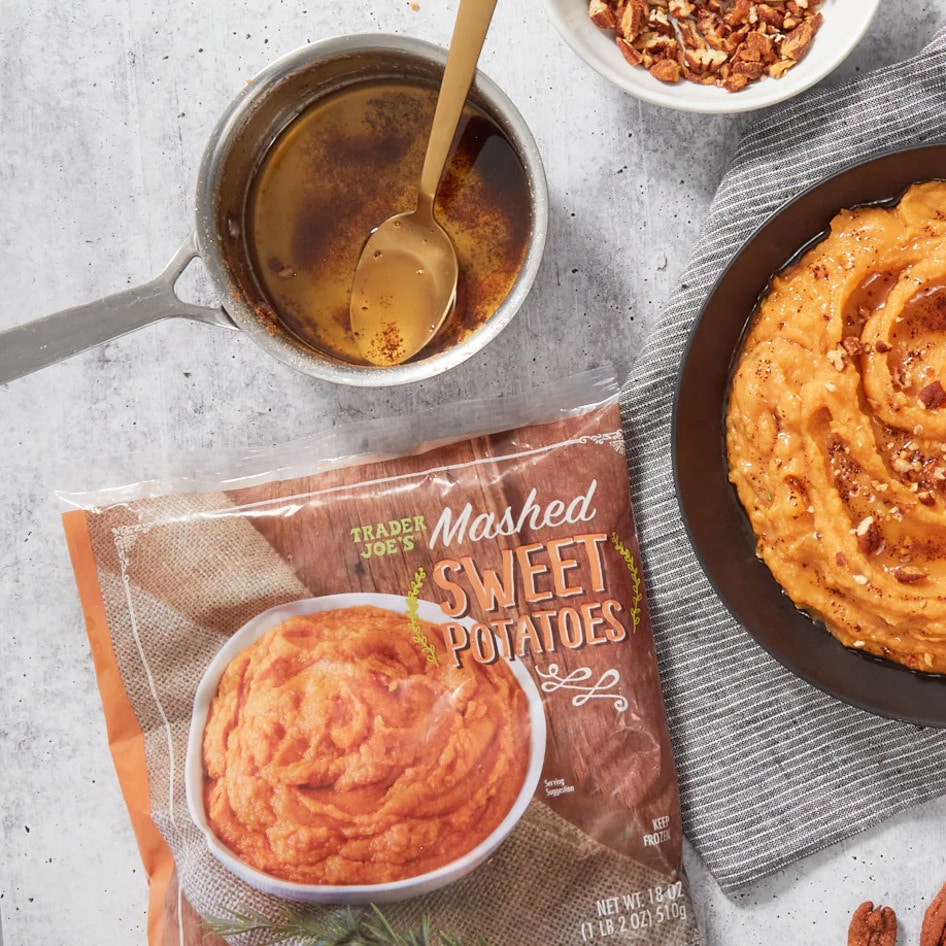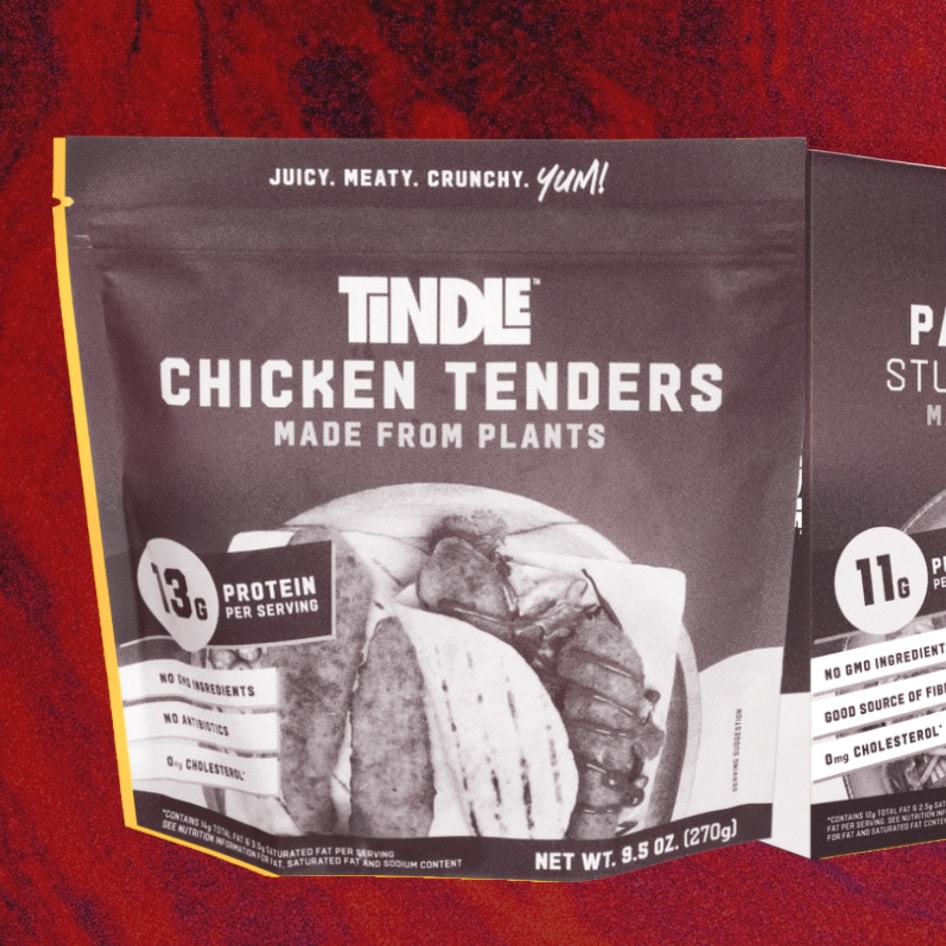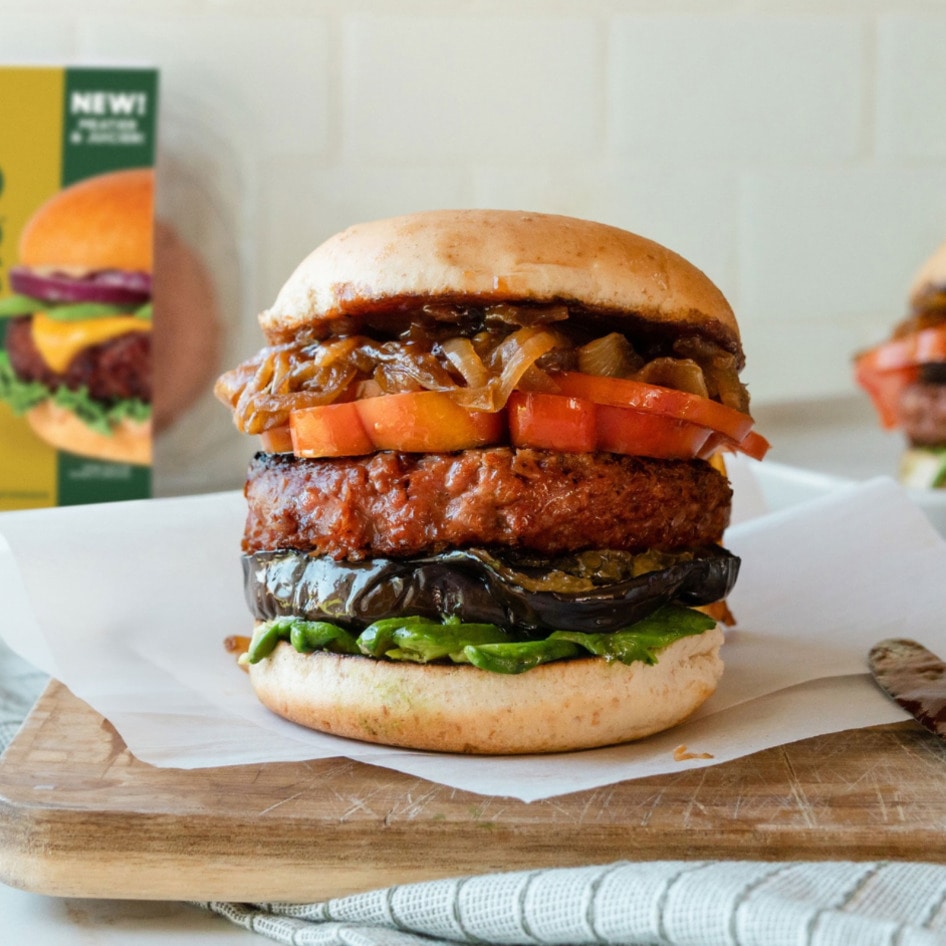At the Trader Joe’s on Hyperion Avenue in Los Angeles, there’s a ritual that locals know well. Shoppers brave the parking lot—voted one of the worst in the city—sometimes before the sun rises, for first dibs on seasonal items: everything from tiny tote bags to that cultish green goddess salad dressing that never seems to stay on shelves long.
The store’s narrow aisles, humming with classic ’80s tunes and filled with Hawaiian-shirt-clad crew members, are cramped in the charming way Angelenos have come to love and expect. There are no self-checkouts, no coupons, no loyalty apps—just a cashier who asks what you’re making for dinner.
Trader Joe’s secret to success
Trader Joe’s has become one of the most paradoxical success stories in American grocery retail: a billion-dollar business built not on abundance but restraint.
While the typical supermarket carries upward of 30,000 items, Trader Joe’s keeps its shelves stocked with only around 4,000. That includes everything from basics like peanut butter and bread to offbeat house-label hits like pickle-flavored popcorn and soy chorizo.
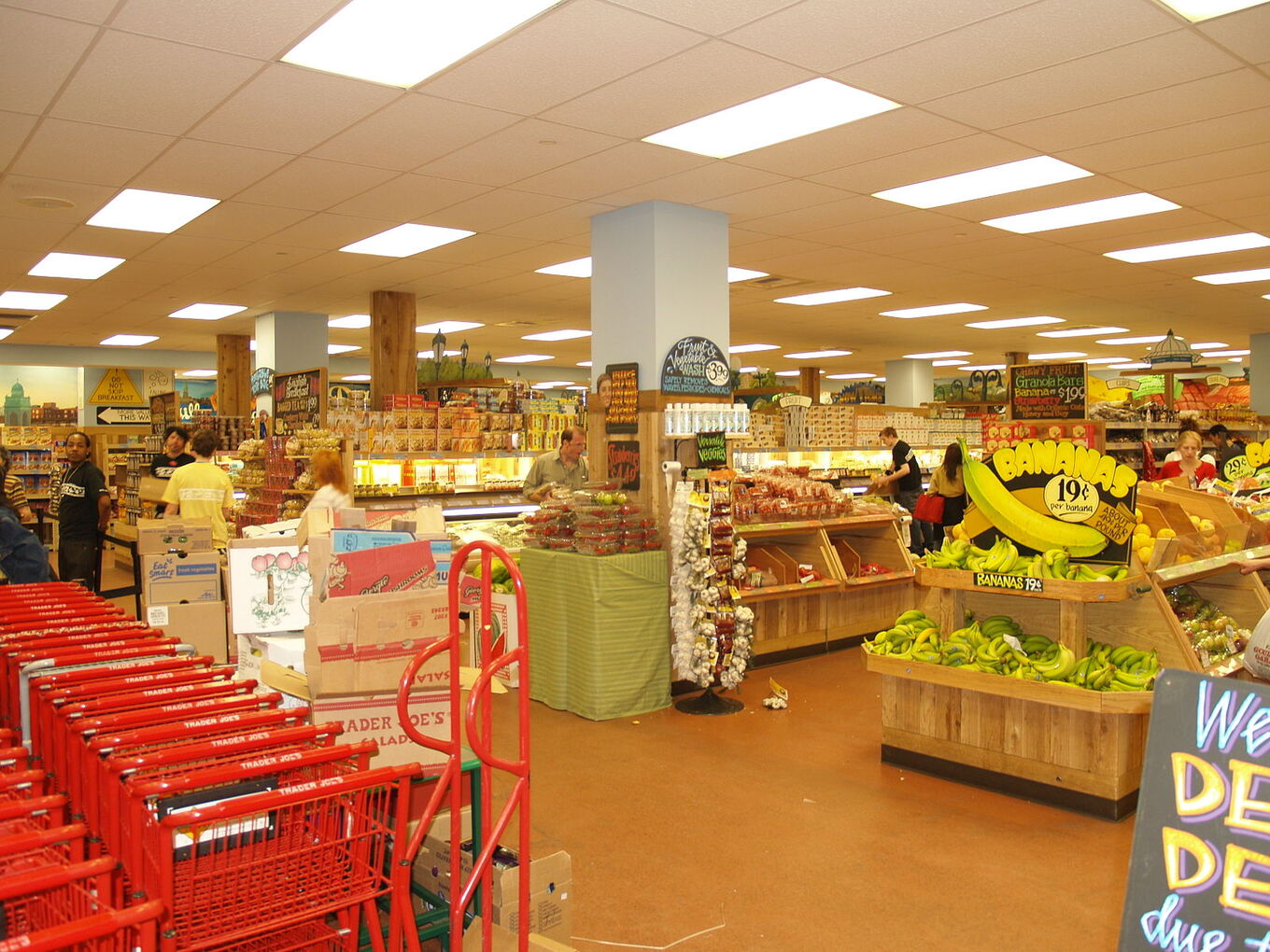 Trader Joe’s
Trader Joe’s
The constraint is deliberate. By drastically limiting choice, the company eliminates the decision fatigue that often paralyzes shoppers in conventional chains.
And the formula works. According to industry research firm Placer.ai, Trader Joe’s stores see some of the highest foot traffic per square foot in the grocery category, routinely outperforming bigger-format competitors. The average Trader Joe’s is about 15,000 square feet—less than a third the size of many mainstream grocers—yet its revenue per square foot hovers near the top of the industry, at an estimated $2,000 to $2,300 depending on location. This puts it ahead of its nearest competitor, Whole Foods, whose per-square-foot revenue lags closer to $900.
BECOME A VEGNEWS VIP: Get exclusive product deals, freebies, and perks galore!
That density is by design. Instead of expanding through larger stores or new tech integrations, Trader Joe’s has doubled down on physical intimacy. Its layouts are less about merchandising and more about movement: a choreography of bottlenecked carts, obstructive end caps, and rotating product selection. Where a typical supermarket might offer fifteen brands of peanut butter, Trader Joe’s will sell three. Where other chains have entire aisles of cereal, Trader Joe’s limits its selection to a few small, manageable rows.
The point isn’t to be everything to everyone. It’s to offer what its customers need, and only that. The store may feel loud, but its secret is delivered like a whisper: you don’t need as much as you think.
House brands
This scarcity is psychological as much as it is logistical. Researchers have long documented the paradox of choice: that more options often lead to less satisfaction. Trader Joe’s seems to have internalized this principle with near-religious commitment. A 2016 Harvard Business Review case study of the company emphasized that its limited SKU count contributes to a faster, more pleasurable shopping experience. The result is less browsing, more buying, and a higher conversion rate per shopper.
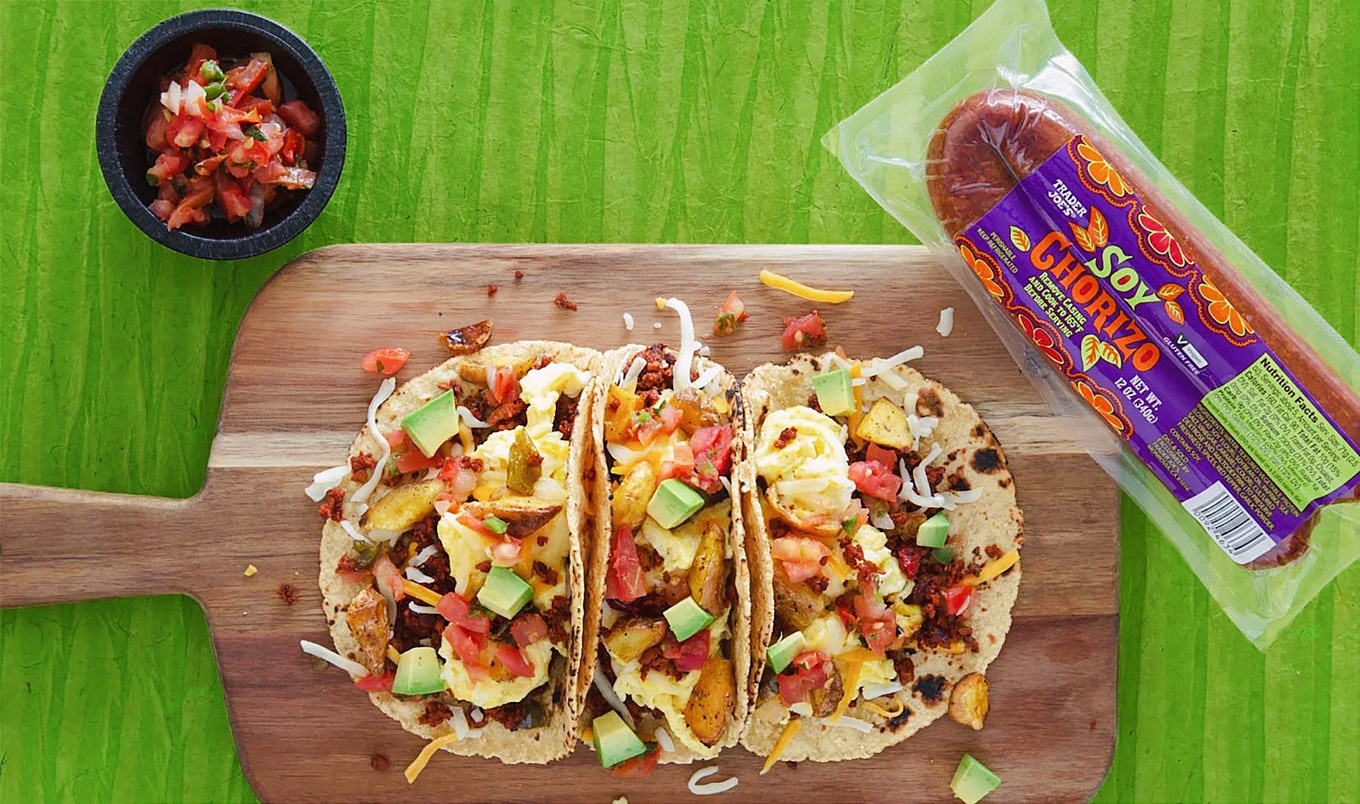 Trader Joe’s
Trader Joe’s
Another driver of Trader Joe’s minimalism is the dominance of private label products. More than 80 percent of Trader Joe’s inventory carries its own branding. This not only boosts margins but also sidesteps national brand slotting fees and advertising costs. In exchange, customers get prices that consistently beat higher-end markets, with quality that often rivals them.
It’s also allowed Trader Joe’s to spin seasonal scarcity into a kind of cultural event. Shoppers know that the beloved Candy Cane Joe-Joe’s or Everything but the Bagel seasoning won’t be on shelves forever—so they stock up.
“There’s this kind of stigma that private label is something that you settle for so that you can pay a lower price than you would for the name brand option,” expert Julie Averbach told CNBC. “At Trader Joe’s, the private label products are affordable luxuries.”
The loyalty loop
Even the aesthetic choices reflect the retailer’s stripped-down philosophy. Trader Joe’s famously eschews conventional advertising, preferring its Fearless Flyer newsletter and hand-drawn signage to digital campaigns or television spots. It doesn’t have a rewards program or partner with delivery apps like Instacart or Uber Eats. This simplicity extends to staffing, where the brand prefers generalists over specialists. Crew members stock shelves, ring up customers, and hand out samples in a way that feels more cooperative than transactional.
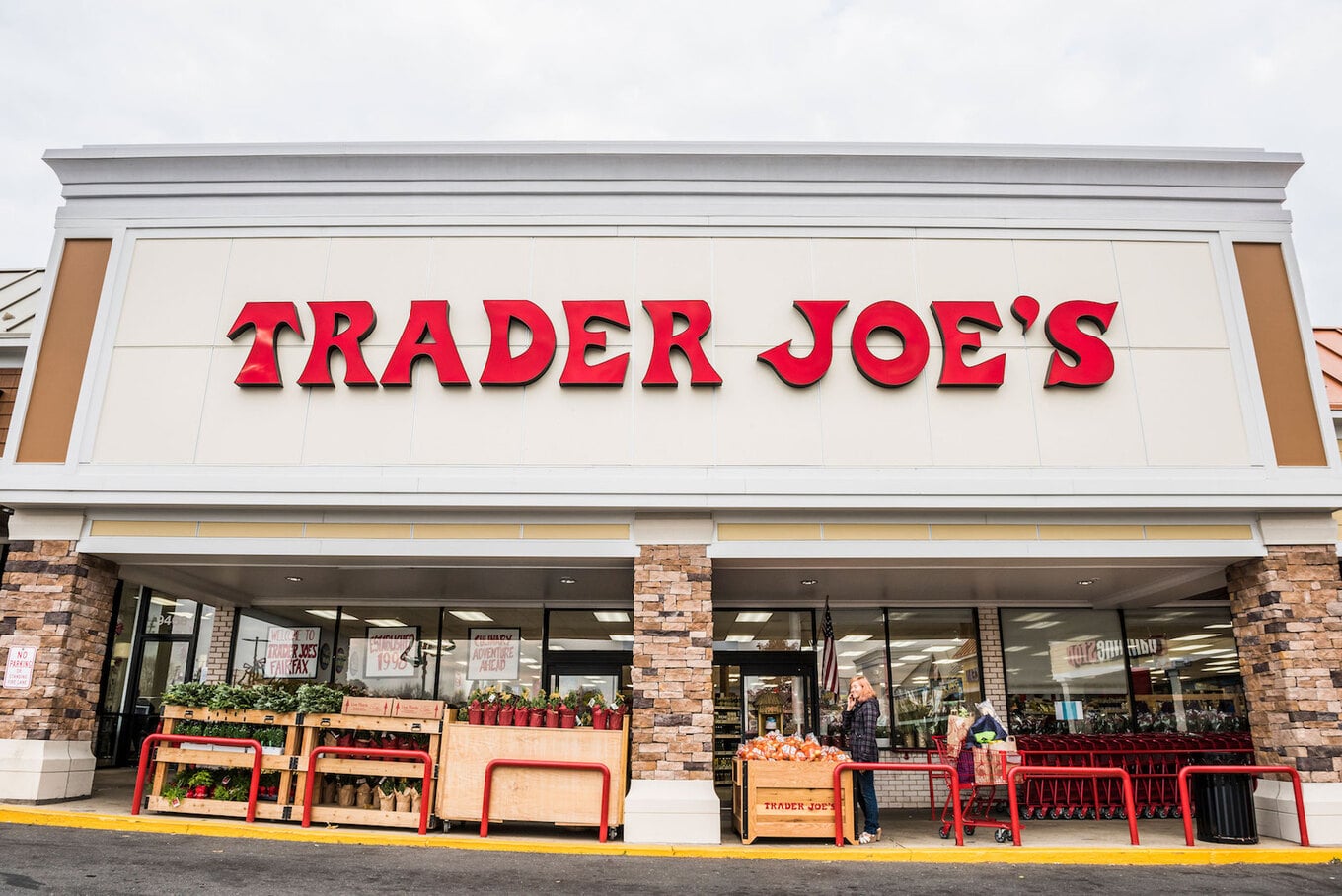 Trader Joe’s
Trader Joe’s
Still, the stores are as varied as the monthly roster of new items. “Each Trader Joe’s is very much unique,” Averbach said. “The artwork is very personalized to reflect the local community. They all tap into a sense of local pride and identity, which is something that I think is really unique for a grocery retailer.”
All of this contributes to an uncanny sense of trust—not just in the store, but in the brand’s intentions. It is not trying to upsell or dazzle with abundance. It wants to get you in and out, well-fed and delighted. And despite its deliberately analog model, Trader Joe’s continues to grow. As of 2024, it operates more than 560 stores across the US, adding around 10 to 12 locations annually, always keeping the same small footprint and tightly edited inventory.
As retail competitors invest heavily in personalization algorithms and shelf management powered by artificial intelligence, Trader Joe’s has staked its future on something more tactile and human. The line might be long. The shelves might be low-tech. But for many shoppers, that’s exactly the point.
“Trader Joe’s is encouraging us to slow down and actually enjoy the shopping experience,” Averbach says.
“And once you slow down and enjoy, you’re also more likely to discover and buy things that weren’t on your original shopping list.”
The delicate balance of consistency and surprise may be Trader Joe’s greatest strength. The stores feel timeless, and yet what’s inside is always shifting just enough to keep customers curious. It’s not the endless scroll of e-commerce or the cavernous aisles of a big-box store. It’s something slower, more analog, more human.
In a retail landscape obsessed with personalization and choice, Trader Joe’s dares to be prescriptive. It’s telling you, with each item, this is what we think you’ll love. And most of the time, it’s right.
For more plant-based stories like this, read:
JUMP TO ... Latest News | Recipes | Guides | Health | Subscribe




